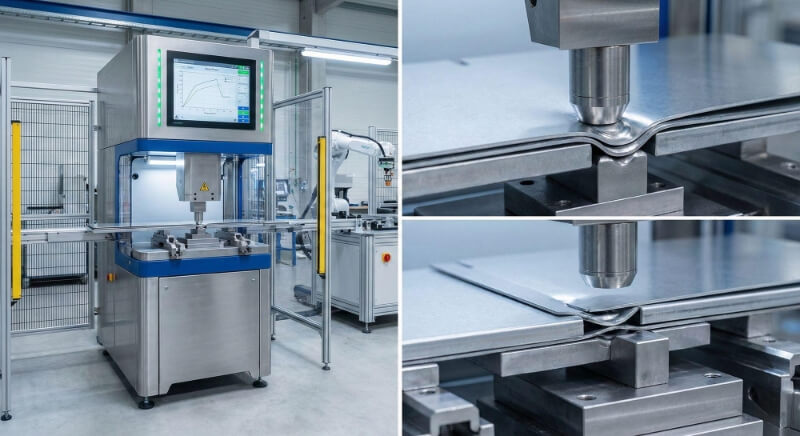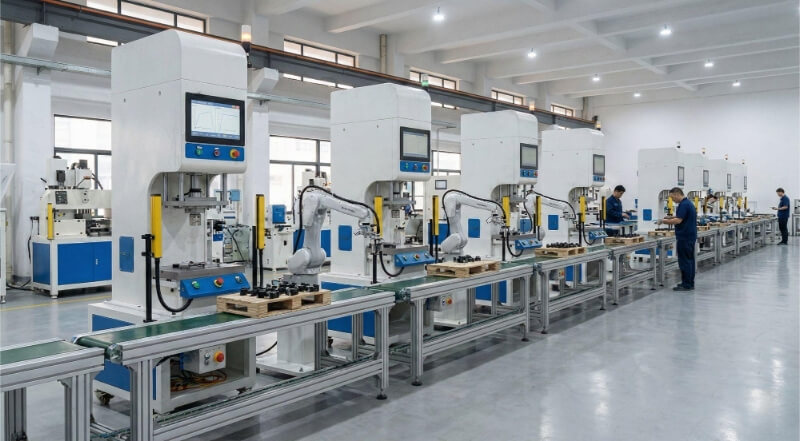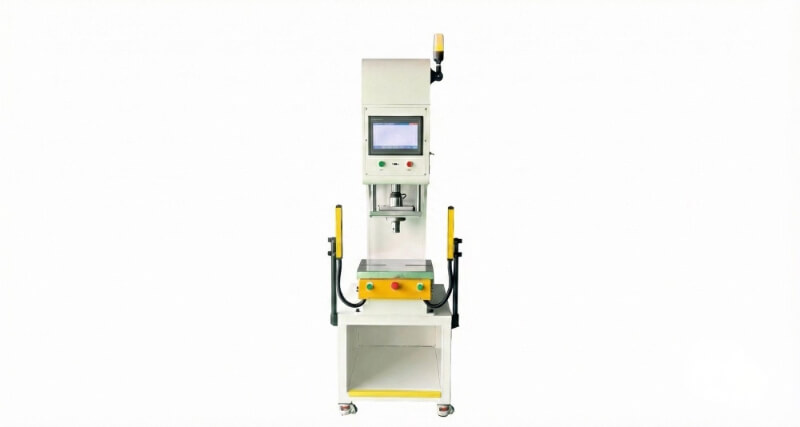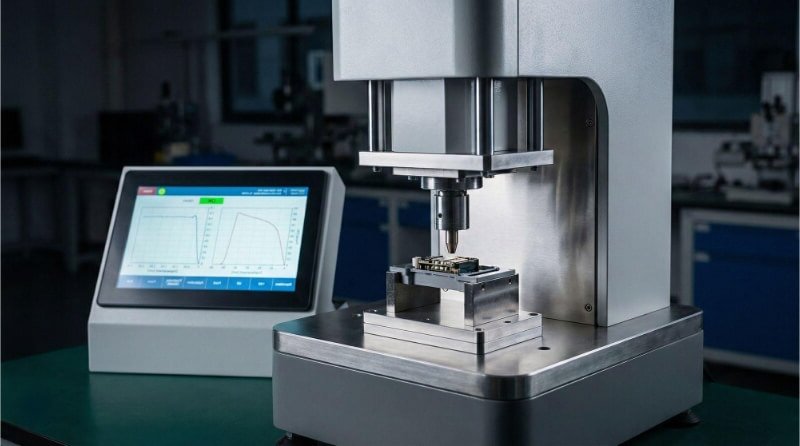금속 부품이 생산 라인에서 출고될 때 날카로운 모서리, 작은 버 또는 표면 스크래치가 있는 경우가 많습니다. 이러한 결함은 조립을 더 어렵게 만들고 부품의 외관에 영향을 줄 수 있습니다. 많은 제조업체는 이러한 문제를 빠르고 안정적으로 해결할 수 있는 방법을 찾고 있습니다. 라이닝은 표면을 매끄럽게 하고 생산을 정상적으로 유지하는 데 도움이 되는 한 가지 방법입니다.
라이닝은 간단해 보이지만 각 단계에는 필수적인 세부 사항이 있습니다. 라이닝의 작동 방식과 사용되는 장비, 그리고 프로젝트에 어떤 이점이 있는지 함께 살펴보세요.
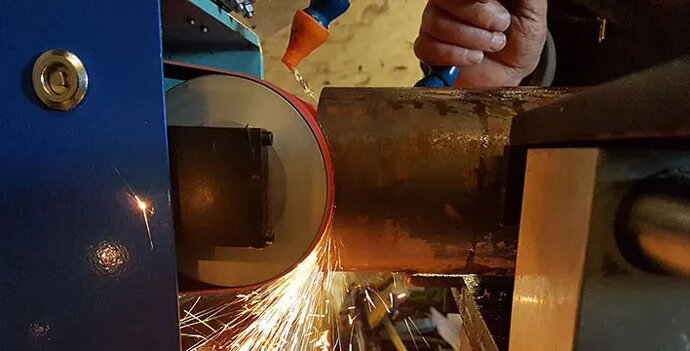
제조업에서 라이닝이란 무엇인가요?
라이닝은 금속 부품을 매끄럽고 광택을 내는 데 사용되는 표면 마감 방법입니다. 벨트나 디스크와 같은 연마 도구를 사용하여 버, 스크래치 또는 용접 자국을 제거하여 표면을 더 깨끗하고 균일하게 만듭니다. 절단, 용접 또는 성형 후 도장, 코팅 또는 조립을 위해 부품을 준비하기 위해 종종 수행됩니다.
이 공정은 금속에 마찰을 가하는 방식으로 작동합니다. 연마 표면이 있는 벨트, 디스크 또는 패드가 부품을 가로질러 이동하면서 거친 부분과 결함을 마모시킵니다. 이렇게 하면 소량의 재료가 제거되고 표면이 더 매끄러워집니다. 결과는 연마재의 입자 크기, 사용되는 압력, 공구의 속도 등 여러 요인에 따라 달라집니다.
표준 도구 및 장비 사용
라이닝 도구는 여러 가지 형태로 제공됩니다. 가장 일반적인 것은 라이닝 벨트 기계입니다. 이 기계는 연속적인 연마재 루프를 사용하여 금속 표면을 연마하고 매끄럽게 만듭니다. 이 벨트는 거친 것부터 미세한 것까지 다양한 그릿 레벨로 제공됩니다.
디스크 라이너는 회전하는 연마 디스크를 사용합니다. 평평하거나 약간 구부러진 표면에서 잘 작동합니다. 휴대용 연마기는 좁은 공간에 접근하거나 소량 배치 작업을 하는 데 도움이 됩니다. 작업자에게 더 많은 제어권을 부여합니다.
일부 장비에는 조정 가능한 테이블이나 롤러가 포함되어 있어 공정 중에 부품을 안내하는 데 도움이 됩니다. 또한 많은 장비에는 먼지 추출 시스템이 있어 공기 중 금속 입자를 제거하여 작업 공간을 더 깨끗하고 안전하게 유지합니다.
상점에서는 앵글 그라인더나 벤치 그라인더에 라이닝 어태치먼트를 사용할 수도 있습니다. 이는 기본적인 마감 작업을 위한 비용 효율적인 옵션입니다.
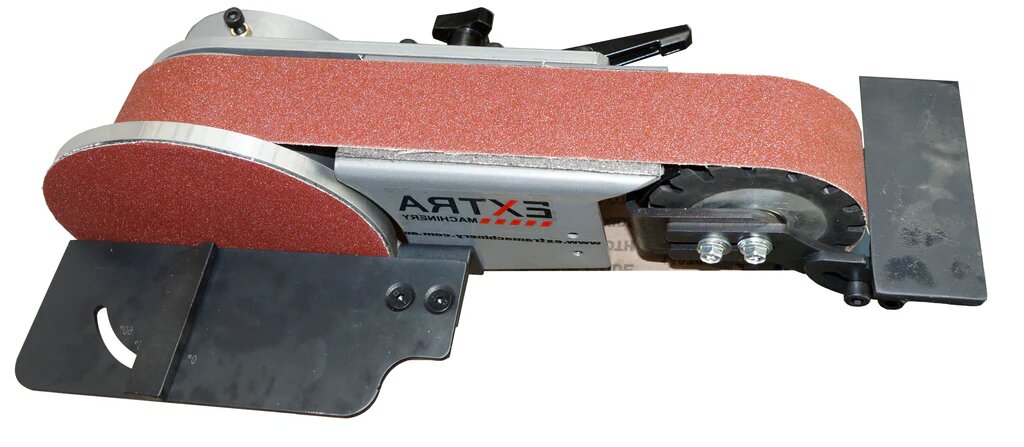
라이닝 기법의 종류
필요한 부품 크기, 모양 및 표면 마감에 따라 다양한 라이닝 기술이 적용됩니다. 각 방법에는 고유한 속도, 제어 또는 마감 품질 이점이 있습니다.
벨트 라이닝
벨트 라이닝은 롤러 위에 펼쳐진 빠르게 움직이는 연마 벨트를 사용합니다. 직선 모서리, 평평한 표면 및 기본 모양에 이상적입니다. 이 방법은 빠르게 작동하며 짧은 시간에 더 많은 재료를 제거합니다. 일반적으로 일반 제작, 자동차 부품 및 금속 가구에 사용됩니다.
디스크 라이닝
디스크 마감은 회전하는 휠에 장착된 원형 연마 디스크를 사용합니다. 평평한 표면에 적합하며 가장자리를 매끄럽게 하거나 작은 부품을 마무리하는 데 효과적입니다. 작업자는 부품을 손으로 잡거나 테이블을 사용하여 더 잘 제어할 수 있습니다. 매끄럽고 균일한 마무리를 제공하며 외관 개선에 자주 사용됩니다.
와이드 벨트 라이닝
와이드 벨트 마감은 넓은 표면적을 처리할 수 있는 넓은 연마 벨트를 사용합니다. 판금, 패널 또는 평평한 부품을 대량으로 가공할 때 자주 사용됩니다. 넓은 벨트는 전체 표면에 걸쳐 일관된 결과를 제공합니다. 이 기술은 스테인리스 스틸, 가전 제품 및 엘리베이터 패널을 제작하고 생산할 때 일반적으로 사용됩니다.
로봇 및 CNC 라이닝
로봇 또는 CNC 라이닝은 프로그래밍이 가능한 기계를 사용하여 공정을 자동화합니다. 이러한 시스템은 동일한 동작을 정밀하게 반복할 수 있습니다. 대량 배치, 복잡한 모양 또는 엄격한 허용 오차 요구 사항에 이상적입니다. 이러한 시스템은 인건비를 절감하고 일관성을 개선하며 접근하기 어려운 표면을 처리할 수 있습니다.
단계별 라이닝 프로세스
라이닝 공정의 각 단계는 매끄럽고 일관된 표면을 만드는 데 중요한 역할을 합니다. 아래는 프로세스가 처음부터 끝까지 어떻게 진행되는지 간단하게 설명합니다.
1단계: 올바른 연마 벨트/디스크 선택하기
첫 번째 단계는 올바른 연마재를 선택하는 것입니다. 굵은 그릿(예: 40-60)은 재료를 빠르게 제거합니다. 더 미세한 그릿(예: 180-400)은 더 매끄러운 마감을 위해 사용됩니다. 그릿 선택에 따라 재료 유형, 두께 및 원하는 표면 마감이 결정됩니다.
2단계: 공작물 고정
다음으로 부품을 고정해야 합니다. 이렇게 하면 공정 중에 부품이 움직이지 않습니다. 작은 부품의 경우 클램프 또는 지그가 사용됩니다. 큰 시트는 작업 테이블에 평평하게 놓을 수 있습니다. 안정적인 설정은 균일한 마감을 얻기 위한 핵심 요소입니다.
3단계: 설정 조정
그런 다음 작업자는 벨트 속도, 압력 및 테이블 높이를 포함한 기계 설정을 조정합니다. 속도와 압력은 제거되는 재료의 양에 영향을 줍니다. 압력이 너무 높으면 과열되거나 표면이 곪을 수 있습니다. 설정은 필요한 부품과 마감에 따라 미세 조정됩니다.
4단계: 마무리 작업 시작
연마 벨트 또는 디스크가 표면에 접촉합니다. 작업자가 부품 또는 공구를 해당 영역 전체에 고르게 이동합니다. 각 패스는 스크래치, 용접 자국 또는 고르지 않은 부분을 제거합니다. 선이나 화상을 피하려면 동작이 일정하게 유지되어야 합니다.
5단계: 최종 마무리
마지막 단계에서는 최종 패스에 더 미세한 그릿을 사용합니다. 이렇게 하면 표면이 매끄럽고 균일하게 보입니다. 필요한 경우 세련 또는 코팅 를 따를 수 있습니다. 다음 단계로 이동하기 전에 부품을 청소하고 표면 품질을 확인합니다.
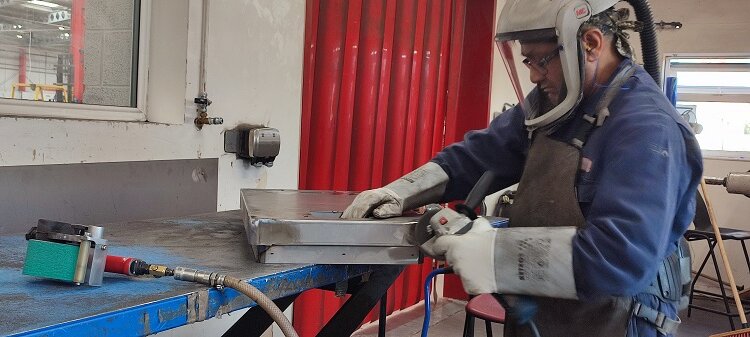
라이닝의 이점
라이닝은 금속 부품의 기능과 외관을 모두 개선합니다. 다음 생산 단계를 위해 표면을 준비하고 디자인 또는 품질 표준을 충족하는 데 도움이 됩니다.
향상된 표면 외관
라이닝은 금속을 깨끗하고 균일하게 마감합니다. 용접 자국, 산화, 공구 긁힘을 제거합니다. 이는 다음과 같이 눈에 보이는 부품에 유용합니다. 패널 또는 인클로저.
코팅 접착력 향상
표면이 매끄럽고 균일하면 페인트, 프라이머 또는 코팅이 더 잘 붙는 데 도움이 됩니다. 라이닝은 벗겨지거나 기포가 생길 수 있는 오염 물질과 거친 부분을 제거하여 최종 코팅의 수명과 외관을 개선합니다.
버, 스크래치 및 결함 제거
라이닝은 절단 후 남은 버를 제거하거나 펀칭. 또한 깊은 흠집과 찌그러짐도 제거합니다. 이렇게 하면 취급 중 절단 위험이 줄어들고 부품이 공차 범위 내에서 유지됩니다.
용접 또는 도장 준비
깨끗한 표면은 강력한 용접 그리고 페인트까지. 라이닝은 이러한 공정을 방해하는 산화물과 거친 모서리를 제거합니다. 이를 통해 더 강력한 결합과 더 나은 시각적 결과를 얻을 수 있습니다.
라이닝 전 주요 고려 사항
부품을 보호하고 원활한 공정을 보장하기 위해 라이닝 전에 특정 요소를 확인해야 합니다. 이러한 요소는 마감 품질, 안전 및 생산성에 영향을 미칩니다.
재료 두께 및 공차
라이닝은 표면에서 재료를 제거합니다. 공차가 엄격한 얇은 부품이나 구성 요소는 각별한 주의가 필요합니다. 너무 많은 압력을 가하거나 패스를 반복하면 두께가 사양 이상으로 줄어들 수 있습니다. 항상 도면을 확인하고 마무리를 위한 공간을 남겨두세요.
열 발생 및 표면 손상
라이닝으로 인한 마찰은 열을 발생시킵니다. 이로 인해 얇은 부품이 휘거나 표면이 변색될 수 있습니다. 과도한 열은 처리된 금속의 성질이나 경도에 영향을 미칠 수도 있습니다. 온도를 제어하려면 필요한 경우 적절한 속도와 냉각을 사용하세요.
먼지 추출 및 안전 조치
라이닝은 미세 먼지와 금속 입자를 생성합니다. 이러한 입자를 흡입하거나 작업 표면에 방치하면 해로울 수 있습니다. 집진기나 진공청소기를 사용하여 해당 구역을 깨끗하게 유지하세요. 부상이나 노출을 방지하기 위해 작업자는 마스크, 장갑, 보안경을 착용해야 합니다.
라이닝의 대안
라이닝이 효과적이지만 다른 마감 방법도 다양한 요구 사항에 적합할 수 있습니다. 재료 유형, 마감 수준 및 부품 디자인에 따라 선택이 달라집니다.
연마
연삭은 라이닝보다 더 많은 재료를 제거합니다. 벨트나 디스크가 아닌 단단한 휠을 사용합니다. 이 방법은 성형, 용접부 평탄화 또는 표면 결함 수정에 적합합니다. 연삭은 더 공격적이고 외관에 덜 집중합니다.
세련
연마는 미세 연마재와 부드러운 패드를 사용하여 거울처럼 매끄러운 표면을 만듭니다. 낮은 마찰이 필요한 화장품 부품이나 구성 요소에 이상적입니다. 고광택이 필요한 경우 폴리싱은 라이닝 후에 진행합니다.
샌딩
샌딩은 라이닝과 비슷하지만 보통 손으로 또는 궤도 도구를 사용하여 수행합니다. 목재, 플라스틱 또는 도장된 금속에 잘 작동합니다. 샌딩은 속도가 느리고 디테일 작업이나 소량 배치에 더 적합합니다.
언제 어느 쪽을 선택해야 하나요?
금속에 매끄럽고 무광택 또는 브러시 마감 처리가 필요한 경우 라이닝을 선택합니다. 무거운 부분을 제거하거나 모양을 변경하려면 연마를 사용하세요. 광택을 높이려면 폴리싱을 선택하세요. 샌딩은 작은 작업이나 비금속 소재에 적합합니다. 부품 유형, 마감 목표 및 예산에 따라 선택이 달라집니다.
결론
라이닝은 연마 벨트 또는 디스크를 사용하여 금속 부품을 매끄럽게 다듬는 표면 마감 공정입니다. 용접 자국, 버, 스크래치를 제거하고 도장, 코팅 또는 조립을 위해 부품을 준비합니다. 라이닝은 소형 부품과 대형 패널 모두에 적합하며 수동 또는 자동 워크플로우에 적합합니다.
깨끗하고 매끄럽게 마감된 정밀 금속 부품을 찾고 계신가요? 문의하기 지금 바로 문의하여 당사의 마무리 기능이 다음 프로젝트를 어떻게 지원할 수 있는지 알아보세요.
안녕하세요, 저는 케빈 리입니다

지난 10년 동안 저는 다양한 형태의 판금 제작에 몰두해 왔으며 다양한 워크숍에서 얻은 경험에서 얻은 멋진 통찰력을 이곳에서 공유했습니다.
연락하세요

케빈 리
저는 레이저 절단, 굽힘, 용접 및 표면 처리 기술을 전문으로 하는 판금 제조 분야에서 10년 이상의 전문 경험을 갖고 있습니다. Shengen의 기술 이사로서 저는 복잡한 제조 문제를 해결하고 각 프로젝트에서 혁신과 품질을 주도하는 데 최선을 다하고 있습니다.

